Michael Fullan and Kaleb Rashad on Leading in a Culture of Change
Key Points
-
Systemness, with its holistic approach, is crucial for educational transformation and should be prioritized over isolated deeper learning initiatives.
-
AI can be a powerful tool in education, but its implementation should be guided by a strong pedagogical and cultural foundation.
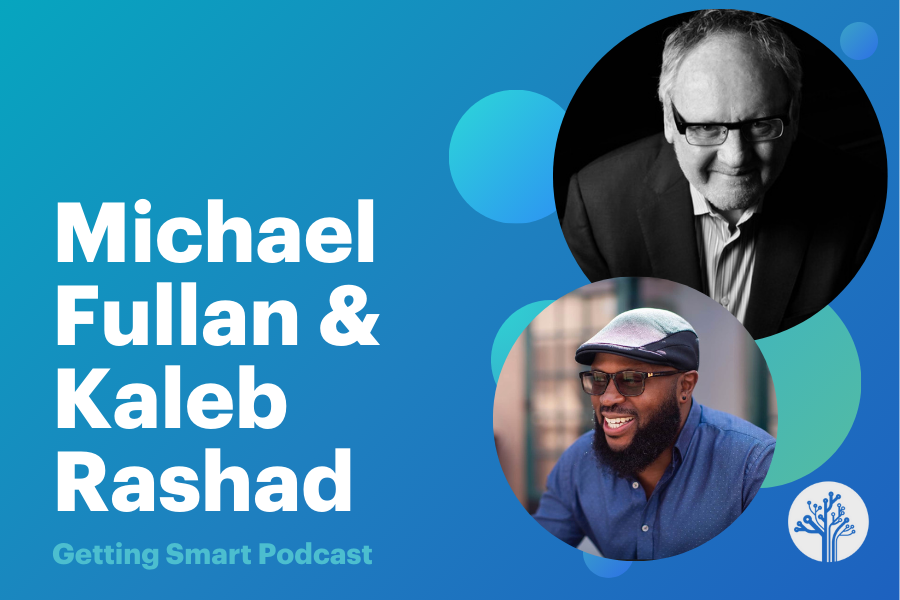
In this episode of the Getting Smart Podcast, Tom Vander Ark and Dr. Kaleb Rashad engage in a thought-provoking dialogue with Dr. Michael Fullan, an internationally acclaimed advocate for deeper learning. Together, they explore whether deeper learning is the key to addressing the challenges and opportunities presented by the new age of AI. Dr. Fullan introduces the concept of “systemness,” emphasizing the need for systemic change over isolated educational initiatives. The conversation covers the transformative progress in Anaheim, driven by the integration of systemness and the five Cs of compassionate learning. Tune in to discover how AI can be a powerful accelerator for education when underpinned by a strong pedagogical and cultural foundation, and what it means to cultivate spirit work in learning environments. This episode is a must-listen for educators, administrators, and anyone interested in the future of education and AI’s role in it.
Outline
- (00:00) Introduction to Deep Learning and AI
- (02:30) Systemness: The Key to Educational Transformation
- (05:55) Challenges and Successes in Anaheim
- (08:52) The Impact of PISA and System Change
- (10:13) Bottom-Up Change: Building Capacity from the Ground Up
- (14:45) The Five Elements of Systemness
- (17:30) AI in Education: Opportunities and Cautions
- (21:14) Spirit Work and Collaboration
- (31:35) Nuance in Leadership
Introduction to Deep Learning and AI
Tom Vander Ark: Is deeper learning the answer to the challenges and opportunities of this new age of AI? We’re going to address that question today with Dr. Michael Fullan, the internationally renowned advocate for deeper learning. He’s the author of many books, including the newly updated “The New Meaning of Educational Change,” and with me to interrogate Dr. Fullan is my friend Dr. Kaleb Rashad, former CEO of High Tech High and founder and creative director of the Center for Love and Justice. He’s joining us from Lisbon. Good evening.
Kaleb Rashad: Evening, good evening, happy day wherever you are out there in the world listening. We are so excited to have Dr. Fullan with us to be able to ask questions and generate maybe lots of entry points for dialogue wherever you might be in this conversation. So thank you for inviting me to be in this space with you to the great Tom Vander Ark, to be able to have a conversation with.
Tom Vander Ark: I know you had an exciting day in Lisbon. You’re really helping to light up the whole country on the subject of deeper learning. I want to come back to that, but Michael, what a thrill to be with you in Anaheim, California last week. I found out that you’ve been working there for a couple of decades. What a joy to be able to celebrate the progress that city has made, with some inspiration from you. What did you see in Anaheim that really made you proud about the work you’ve been doing for the last few decades?
Michael Fullan: Yeah, that’s a big question, and it’s actually got a shorter answer because the intense relationship is only about three years old with them. They took our six Cs, they condensed them to five Cs, as you know, compassionate learning and the Cs. Then they built pedagogy and the capacity of students, teachers, and others around that. Over the last three years in particular, although it’s been going on about eight, they have really honed it to a point where you can see what’s there.
Systemness: The Key to Educational Transformation
Michael Fullan: So a couple of things, though: I don’t think deeper learning per se is the answer. I’ll give you my answer, but it’s not deeper learning. It’s systemness. Systemness means something highly specific to us. Secondly, we are now in the early stages of phase two of Anaheim, meaning all their success up to now has been steps in the right direction, the ones we have just worked out jointly with them. The very beginning is about to go deep, really deep in deep system change, and it’s going to involve other districts. We can talk about what that shift has been, but they have really moved forward getting the basics of the new stuff right. But to really go deep in the system change specifically involves a half a dozen things, and it’s describable. We’re able to find it now in successful districts and other places. I’ll just say one more thing. We are funded for part of our work by the Stewart Foundation. We just completed a report you’ll be able to get at the end of March. They asked us to look at Anaheim, saying, “Okay, Anaheim is pretty good, but we keep hearing about Anaheim. What else is there out there?” We identified six of these districts and are just sharing our report next week with Stewart. The official title is “System-Wide Supports for Adolescent Learning and Wellbeing: Evidence from Six LEAs in California.” It’s a substantial report, and it nails it. We call it proximity to practice. The specificity is about the transformation of the whole system, the whole district. But now we want to go for bigger than the district. We want multiple districts rubbing off on each other until it becomes a change in the state. It’s exciting, and it’s describable. It’s hard to do, but people are doing it. Love it. And it’s the beginning, I’m going to say, of a new movement.
Tom Vander Ark: All right. I want to just underscore that this was a very unique AI conference because it wasn’t really an AI conference. It was a deeper learning conference. It was to explore the systemness that helps to create powerful learning experiences and ways in which AI can aid in authoring, hosting, and assessing deeper learning experiences. I super appreciated the context. It’s very different than the other AI conferences that are happening these days, which are mostly about automating bad pedagogy. This one was so rooted in the way you’ve helped us think about better learning. I really appreciated it.
Kaleb Rashad: I would love to hear, especially given the relationship you had with Anaheim, and I’m sure there are many other superintendents, parent advocate groups, teacher groups, folks who have a deep investment in our schools.
Challenges and Successes in Anaheim
Kaleb Rashad: Given all the things happening in the country, especially in the US, I’m curious about what was Anaheim grappling with. What were they noticing in the very early days, if you know this or if you can share? I wonder if other districts are making similar observations or have similar fierce wonderings. Can you say a little about what the superintendent at the time or their community was asking?
Michael Fullan: They started, you might know, with a shock. I think 2015 or 2014, there was violence in the city, in Oakland. Police had shot a couple of Black young people, and there were riots, and the whole thing was imploding. It was then that the mayor, Tom Tait, who I never met, and Mike Matsuda, who had been a teacher, was appointed as a superintendent. They said, “We’ve got to do something, the flip side of what we’re seeing.” That was the impetus, obviously a traumatic, negative impetus. Mike Matsuda then came across the six Cs and said, “Oh, let’s work with this as a driver.” It’s a better driver than academic achievement, which doesn’t have any to it anymore. They honed the drivers. The other thing they did that was really critical is they started to fill in new pedagogy and new pathways to society that gave each and every student—they go from grade seven to grade 12, as you probably know. There are 26,000 students, 20 schools. They started to build back, back, build into that, operationalize the five Cs around the pedagogy, around the destination to be good in society, for society, build up the community, support the business, support the linkage to the university, mobilized the teaching force. That’s when I really joined them in person, let’s put it that way, three years ago, four years ago.
Kaleb Rashad: Wow. Beautiful. I am here, as Tom was just mentioning, in Lisbon, and Lisbon, outside of Lisbon, a province called Aish Valley. They just hosted their first education innovation conference with lots of support from all kinds of stakeholders in the community, hosted by CNN Portugal. One of the things they were grappling with was the value of PISA. How important is it in Anaheim? How did they grapple with those realities of external quantitative hard measures and any sort of softer, more difficult-to-measure metrics?
Michael Fullan: Good question.
The Impact of PISA and System Change
Michael Fullan: Let me step back into my book, “The New Meaning of Educational Change,” sixth edition. The first five chapters reviewed my previous five editions—not in a boring, mechanical way, but like what’s going on here? This goes from 1965 to 2004, and it concludes this: that 100% of system change in all the countries that I can find—we, Australia, you go to England, UK, US, on and on—there is no system success whatsoever over that 40-year period. Zero system success. The reason—I’ll get to your question in a second—the reason is that it came from the top in various forms. Top-down change, my conclusion, can never work. A, because the top doesn’t know what it’s doing. They’re not close enough to the problems. B, because they come and they go. So they never learn anything. There’s a new top every 4, 5, 6, 8 years. And three, the complexity of learning got compounded by what we want from our school systems. Therefore, they couldn’t, even if they were committed, figure that out from the top. So, as you know, some of my book, I flipped it around.
Bottom-Up Change: Building Capacity from the Ground Up
Michael Fullan: I said the driver here has to be bottom, middle up. That’s the driver, not top, middle down.
Kaleb Rashad: Yes.
Michael Fullan: You have to build the capacity of the bottom, which is the unit: the student, the teacher, the principal, the parent, the community. That’s the primary unit. And then, if the district’s good, as Anaheim is, they can partner in that and move it forward. If the district’s not good, leave them out there. So I ended up saying, build the bottom, strengthen the middle, and intrigue the top. I use that playfully, which is to say to the top, “You don’t know what you’re doing, so stay out of the way.” Then, you know, we play with that.
The day PISA started was the day almost that the system declined and declined and declined. We go deeper into this. Pasi Sahlberg, who you would probably know,
Kaleb Rashad: Yeah. Yeah.
Michael Fullan: A Finnish guy working in Melbourne now. He has written some good books on comparing things. Basically, one of his findings is that the PISA scores are wrong because they measure academic achievement, and academic achievement is not an intrinsic motivator. He found that. Also found—and this is shocking, I think—that PISA got more and more of a questionable reputation for being the strategy to the point where recent research shows different countries that the percentage of students who are taking PISA do not take it seriously. They do not think it’s high percentages, like 30%, 60%. So they write the test. It doesn’t matter to them. They’re not even taking it seriously. So it’s the wrong measure, and it’s not even getting at the stuff that’s needed. Now, back to your question, what Mike and company at Anaheim recognized is that they built the five Cs. They said that’s the motivator, that’s the North Star. We’ve got to fill it in with pedagogy and development.
Kaleb Rashad: Yeah.
Michael Fullan: Pay attention to the academics. Let’s say literacy, numeracy—you may know the results. Now the results show that they do better on numeracy and literacy than other adjacent districts that are better off financially. They do better, but they don’t exactly hide the scores. They say, “Okay, here, you want our scores, here, take a look.” Parents take a look, but your better score is how well your student is doing and where they’re heading and why they want to be alive in this day and age. And what are their aspirations? So they just—the test scores are a distraction. Better news: You can actually get them moving upward if you do the core competencies that we talk about as the basis and the motivator.
Kaleb Rashad: This is what we talk about all the time: the cart and the horse,
Michael Fullan: Yeah.
Kaleb Rashad: People put the cart of accountability before the horse, the driver of motivation and in the passionate interest of our young people and squash that in order to chase what’s in the
Michael Fullan: Yeah.
We have evidence now that’s accumulating. It’s just at an inflection point. And I have to say also that as bad as Trump is for this agenda, he has actually stimulated in Canada a unification we haven’t ever experienced in our 150 years or 200 years. And it’s around the direction. It fits our new model, which is I call it systemness, but what it is, is in one definition, I just think systemic change. People we work, actually do work with Peter Senge, and Peter says, “Oh, I find, I, he himself says, I find systemic. I find that word clunky.” He said that’s the word he used. And so I said, “Okay, let’s make it less clunky. Let’s call it systemness. Systemic is what you study, and systemness is what you own, is what you are.” So what we are doing is giving students, teachers, and administrators the skills so that they can talk to others, to me, and to anybody else about what systemness is, which is, this is what I feel about the level of system I’m in. I’m at the school level as a student. This is how I feel about my level, and I want to know more about it. I want to learn laterally. I want to change it. But I also want to know about the next level up. The middle. What’s the district doing anyway? So what about policy? What about society besides going to the pits? I gotta know about that. So the whole thing is gelling in the right direction.
The Five Elements of Systemness
Michael Fullan: I want to give the five elements that we do, and I don’t mean we do it, step 1, 2, 3, 4, 5. But roughly speaking, this is the interactive mode, this core strategy. The first one, some people call it the North Star. It’s the social purpose, a sense of purpose. The word I have just landed on in the last couple of years is spirit work. So the big driver is spirit work. Everybody likes that term if you can understand what it means. But it means your commitment to the human advantage, your commitment to the betterment of society. And in Anaheim, they do it around getting better in society and for society. So they have pathways to being in society as a good learner and that you’ll do better and you’ll change society. So that’s one of five. Second five are the global competencies, which starts to give flesh to it. It could be five or like way, and we’ve got six. That’s okay. The third one, I’m going to call it the learning pathway, is the quality pedagogy that has to change. The role of students as co-developers, the role of teachers working and learning from each other, the role of principal and teachers working together. So that’s the third one. The fourth one is measuring progress, which is measuring basically the five or six Cs. That’s the competencies that everybody has and how they get to it. And the final one is the overarching transformation of the culture of the society. It flows back on, it’s all the things we talk about, but quality leadership, quality cultures, they obviously operate all through the five, but I put them at the end as a double back overarching look at, okay, how are we going to produce this system? We can only produce it by the transformation and upping the participation of leaders, including students as co-developers. So that’s what we’re finding. I mean, we’re advocating it. But we’re finding it in the successful cases.
Kaleb Rashad: A thing that I will highlight is the sort of democratization of power,
Michael Fullan: Yeah.
Kaleb Rashad: Of the base and mobilizing the middle like that speaks deeply to me in that sort of Highlander-esque grassroots movement work in the same way that it sounds like folks in Canada are galvanized as a sort of outcropping of what’s happening here in the US. Here in the US, especially in Black and Brown communities, are trying to attend to that agency to force the systemness because, you know, for so long we’ve been in these positions where we didn’t have a voice in
Michael Fullan: Yeah,
Kaleb Rashad: our young people.
AI in Education: Opportunities and Cautions
Michael Fullan: I’d like to just also add AI while we’re talking about it, because it’s obviously coming up right and left. The take on AI, it’s actually very kind of, not so straightforward, I guess I want to say it like that. Some of it is which we know what the drivers are. The drivers are that North Star and the pedagogy, and the accelerators could be technology, like AI, so that’s one relationship. But it’s so powerful and so ubiquitous, and people sort of grasp at the big straw of AI, they don’t get the causal direction very well. And one could almost say, if you don’t know what you’re doing by way of culture and pedagogy, don’t go for AI. You could almost say that. But all of our, all of the successful ones we’re talking about are using AI as a powerful lever.
And I’m going to talk about a couple of new things here that aren’t even fleshed out as much in the book. One is, what does it mean for technology to be an accelerator when it’s all around you and developing at its own pace? Some of the original inventors like Jeff Hinton, who’s from Toronto and created large language models, etc., over the periods, they are saying, we’re worried about AI. Our best advice is if you don’t know what you’re doing by way of learning, stay away from AI until you do know more about learning, and that’s kind of how they talk. I want to introduce a couple of really newish things here that rattle the cage.
I’m going to say that there’s a book you may know, it just came out recently called “The Technological Republic.” Do you know that book? It’s by Alexander Karp and Nicholas Miska. And “The Technological Republic” is an analysis. It’s so, it so fits the day, and it’s so complex. But basically, the analysis is that the way in which technology has been developed, taken through Silicon Valley, has produced an amoral phenomenon. Amoral without morals. That’s what it is. Karp’s analysis is that all of this technology was developed in Silicon Valley, and what it amounted to was a big pile of greed and innovation without a purpose, without an operational purpose. And the reapers of it were the guys, mostly guys, that produced it. They say the alternative is it should be driven by a social purpose, not by the speed of technology. It’s really, really gets very complicated. But I’m going to say our first foundation, which is spirit work, good in society, good for society, is the moral purpose. Driver is the fundamental driver that technology has ignored or left aside and said, produce. It’s like the atomic bomb. Produce the best possible bomb and then let policymakers worry about how to use it. Well, policymakers, you can see how they are using it in the US right now, they’re using technology. They’re using it for nefarious purposes because they happen to, that’s what they happen to like right now. So I’m saying that the whole, so we are now about to take seriously, we’ve already learned bottom up, middle top is a better way of thinking about it. Now we know what if we looked at the ultimate driver to be the spirit of humankind and what it represents and how students and teachers interface with that. What if you want, what if you try to transform the system to be that good?
Kaleb Rashad: Oh yeah. Oh yeah. You look, let me tell you something. You’re speaking my language.
Shorts Content
Spirit Work and Collaboration
Kaleb Rashad: I love that work you did around spirit work and the science of collaboration. It reminds me a little bit of Margaret Wheatley’s work around the spirit warrior.
Michael Fullan: Yeah.
Kaleb Rashad: Just like give a little cliff notes, like what is of that spirit work?
Michael Fullan: Margaret Wheatley wrote the preface to that book. I wrote it with Mark Edwards, who was a pre, is a, was a superintendent in the northeast of the US. It is exactly what she’s talking about. But she has never got her solution to live in systems. And, you know, she’s been trying for longer than I have, 50 years, whatever. So it’s compatible with that. So we, in the spirit book, we did “Spirit and Science of Collaboration.” We largely, Mark helped in this because he was based with a lot of this. We identified seven districts that were really on the move that people said, no success anywhere? And we said, well, here’s seven successes. And they had, they’re large. Some of them had 200 schools, Louisville, Kentucky, for example. Some of them had 25 schools. So they were all over the US, and I think we did capture the right combination. The spirit work, none of them used the term spirit work when we started the study. Halfway through the study, when we were showing them our findings from their data, we said, this is what we think is happening. And they, within a nanosecond, each of them individually, separate from each other, said spirit work is exactly what we’re doing. So that was the opening of the door. What we’ve been doing since then, ’cause we couldn’t, we could prove the collaboration, we could prove the care for students, we could prove some of the strands in that, but they weren’t, those seven districts weren’t informed by what we know now. Five years later after COVID, what we know now. So now we’re able to identify and districts are joining to do this. The real, it’s Meg Wheatley alive, I guess, in the form of, obviously it’s collaboration, it’s teamwork and that, but there’s a certain commitment to spirit work in the practical sense of what does it mean to live well and to get better.
Michael Fullan: In society.
Kaleb Rashad: Dr. Martín-Baró, he introduced to the world this idea of liberatory psychology. This liberatory psychology is like practiced in psychological sectors. We at the Center for Love and Justice started thinking about this as a way to awaken the spirit. And so we think about this in like, like through these lenses of like identity, belonging. Relationship to place the quality of the dialogue in your reflection, sense of democratization, your willingness to share power with other folk. In service of that, we like awaken this spirit that might lay latent otherwise. And so his, not psychology, but liberatory pedagogy as a way to wake up, to rouse the spirit. So I, this resonates with me and I love the idea of thinking about how to actually bring it through to life, through praxis, through
Kaleb Rashad: action, with some intention
Michael Fullan: Yeah. Some of this stuff has been around, like you, as you said in snippets here and there, like, the one you gave. But it never caught on because it sounded like you had to join a cult of this or that nature I’m talking about. So we’ve normalized it. I guess I want to say it that way. This is the work we’re doing, in the spirit work of the other elements of it is the most natural thing that I’m going to say anybody from age four to 18 could tell you what, what a could describe it. When I say system, but these kids can describe it because they feel the negativity of if it’s missing and they feel the empowerment and the rise when it’s there. So we’ve, we’re trying to normalize
Kaleb Rashad: Mm-hmm.
Michael Fullan: what your, what the cult people have started, but didn’t go far enough because it could be mainstream. We really think, and Canada, Canada’s best contribution to the US now would be to lead the way to make this mainstream.
Kaleb Rashad: And if I could like tie these two things together to Tom’s question at the very beginning is deep learning and let’s call it an answer to AI.
Michael Fullan: Yeah.
Kaleb Rashad: And if we’re talking about this kind of deep learning that is about the awakening of the spirit in the course of doing this work, it might be at least a part of the pantheon of possibilities.
Michael Fullan: Yeah, I think so. I wonder, I like Ethan Mollick wrote the book with the four guidelines on, he’s a heavy user of AI, his, I probably won’t remember all four, but they’re really useful. The fourth one is assume that the AI you’re using now is the worst example of AI you’ve ever seen.
Kaleb Rashad: Oh,
Michael Fullan: In other words, it’s a baby.
Kaleb Rashad: Yes.
Michael Fullan: Yeah, it’s a baby. And so, and then he is always invite AI to the table, try to humanize AI. And there’s still some mystery going on in the book. I just read Nicholas Carr, who wrote some really good books earlier on technology, that he said separate technology is separating humans from machines and stuff like that. In this one, which is called something like “Super Bloom,” that’s the name of it, “Super Bloom,” and he says technology does this, this new stuff is, you know, separating humans out of the picture too much. But then he starts to look at some of the more surprising interactions with AI, and he has something, he said, something mysterious is going on that AI is connecting things that, because of the nature of it, it’s not predictable, but it comes out something that’s worth thinking about. And it’s, it literally is not because it’s, you know, it’s sensing this, it’s just because these complexities start to learn from practice, learn from practice, learn from those that are closest to practice, and they are seeing things that are mysterious. And so I think there’s some unknowns about AI. And it’s not that the AI is going to get conscious, it’s just that it’s in a sea of interaction and power that we don’t know what’s going to come out of it. Some of it will be marvelous and some of it will be destructive. And this is like, mysterious is the best word I can use. I.
Kaleb Rashad: Now, I don’t know how we’re supposed to have a 30-minute conversation here, Tom. I mean, given what some communities might be feeling as despair all over the place, we need to have more of these kinds of conversations with multiple entry points into these dialogues in action.
Michael Fullan: In the next 24 months, your work and our work and others, I know, will start, these things will start sprouting as more describable, more prevalent things in reality. So this is the work of the next, well, more than 24 months, but let’s take 24 months at a time.
Tom Vander Ark: That’s a good compact timeline. To try to wrap this up. I’m going to reflect on my opening question, and then Caleb, I’ll allow you to give a closing benediction.
As Caleb just said, we’ve been exploring the question, is deeper learning the answer to the challenges and opportunities of AI? I came into this discussion as I usually do, pretty fixated on deeper learning as a set of learner experiences, powerful learner experiences, so discrete, project-based experiences, sometimes strung together into something useful. And in this dialogue, both of you have helped elevate me to the system level to see systemness as the solution, not just a series of cool experiences. So, Dr. Fullan, I appreciate your answer immediately at the outset was deeper learning in systemness one around a moral purpose, one with thoughtful pedagogy, useful measures, and grounded in a deep culture. So I love that answer. I think that’s the best answer that we have to the path forward. But Dr. Rashad, give us a closing benediction on this question. Or did we just describe the path forward?
Kaleb Rashad: I think when we’re talking about this question about the way you frame this question, I think yes, systemness can help support us in some ways, and there’s this permeable sort of membrane around that which is beyond what we can see visibly, that is about our shared humanity, our shared connection, our sense of shared identity and purpose and relationship to each other moves in and out of systems. And that is sacred and righteous for us to cultivate. If AI and if the deluge of technologies the sort of optimization from the deepest parts of yourself and from others and from the planet. Then maybe, you know, part of our here, I mean, we got several conversations we need to have, but it is about systemness. Yes. And something beyond systemness. What would you say, Dr.
Michael Fullan: I think it’s a great comment that I have one kind of, I guess, constructive response. ‘Cause what you’re saying is it’s mysterious and you can’t get out of it very, very readily.
Nuance in Leadership
Michael Fullan: I think I take another more accessible concept. I wrote a book about it, and the book was 2019. It was called “Nuance.” A lot of the things that we’re talking about that are there, the best leaders are the ones that pick up the nuances. I had a whole list of them in the book that get case studies on. So I think we can be, we can be more proactive by taking nuance seriously in trying to pull those meetings that are just below the surface without getting into spirit land that we can never find our way in or out of. So think nuance and think deeper that way.
Tom Vander Ark: Thank you to Dr. Kaleb Rashad. You can find out more about his work at the High Tech High Graduate School of Education site at hthgse.edu. You’ll learn there about his Center for Love and Justice, where he is transforming the world. He is in Lisbon today spreading the gospel and Michael Fullan. Deep appreciation for your third. Check out the sixth edition of “The New Meaning of Educational Change.” There’s a lot of new and improvement in this book, so please go get the sixth edition. You’ll be happy you did. Thanks to our producer, Mason Pashia, and the whole Getting Smart team for making this possible. And until next time, keep learning, keep leading, keep innovating for love and justice.
Thank you all.
Guest Bio
Michael Fullan
Kaleb Rashad
Links
- Watch the video here
- Kaleb Rashad Linked In
- Michael Fullan Press Kit
- Michael’s Books Mentioned In This Episode
- eKadence
- Education Reimaged
- The Creation of Settings and the Future Societies
- Getting Beyond Better offers a primer for social entrepreneurs
- Humility is the New Smart
- Michael Fullan Sees Global Momentum for Deep Learning
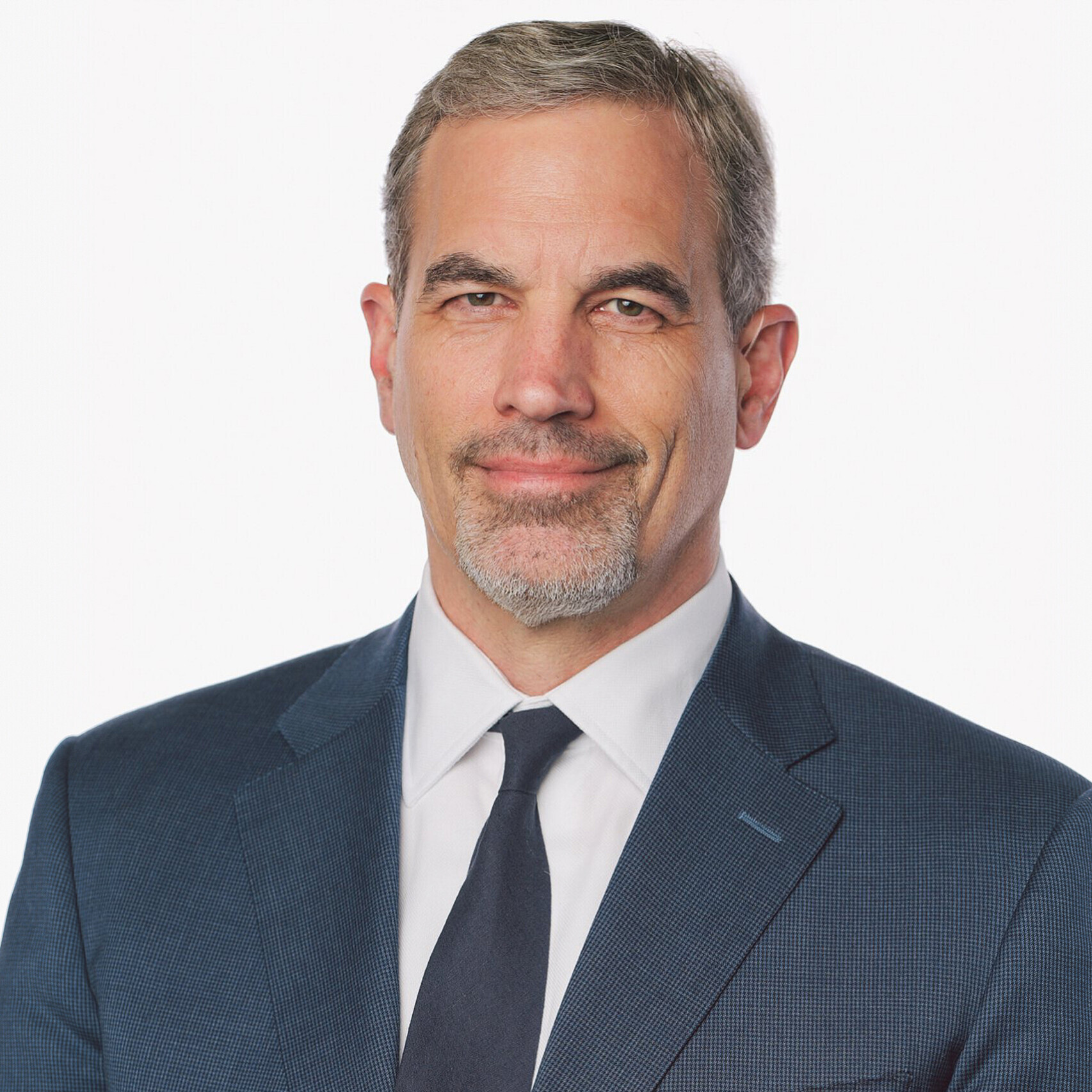


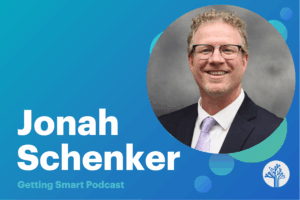
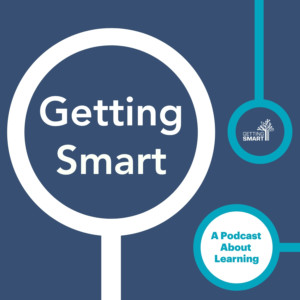

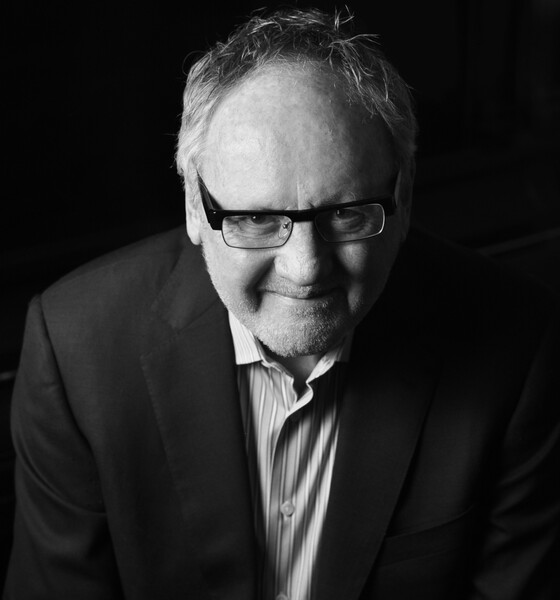
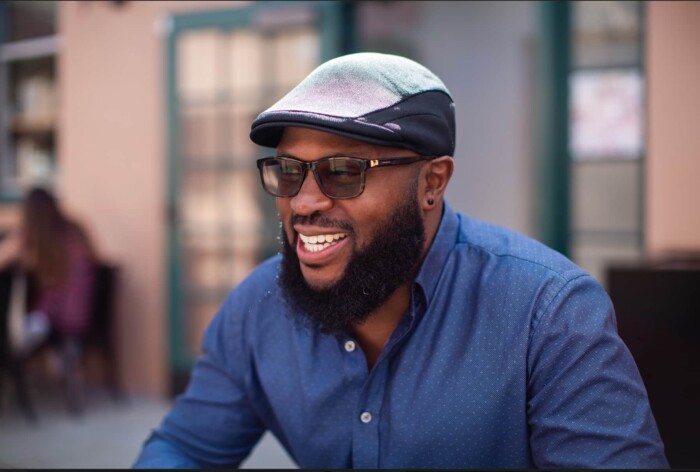

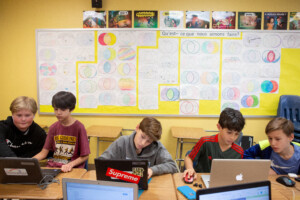

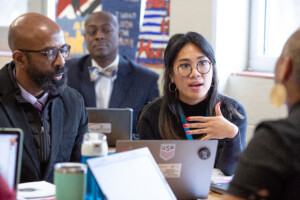
0 Comments
Leave a Comment
Your email address will not be published. All fields are required.